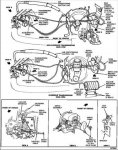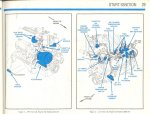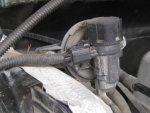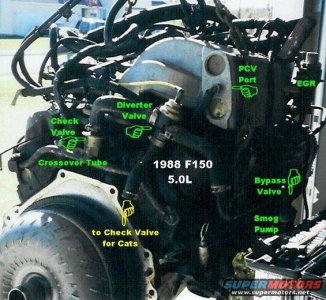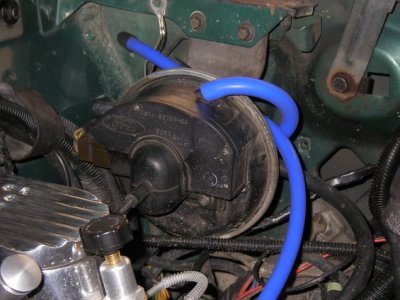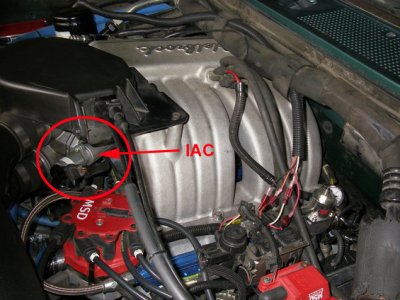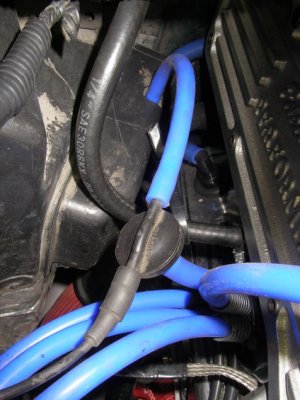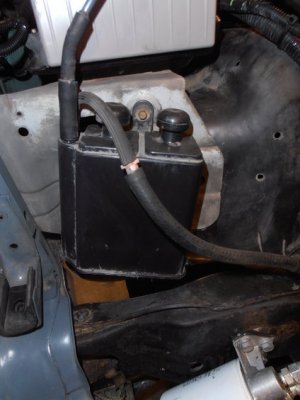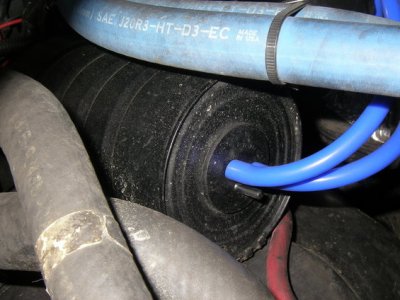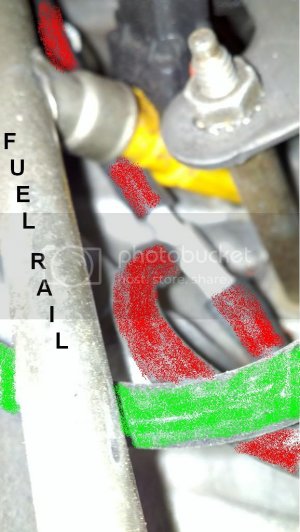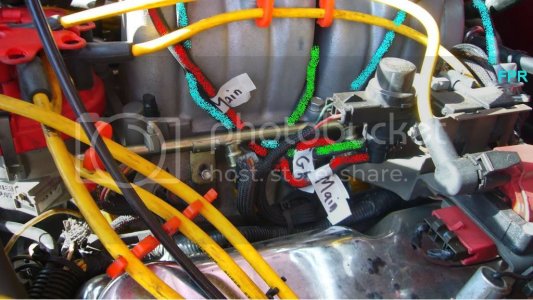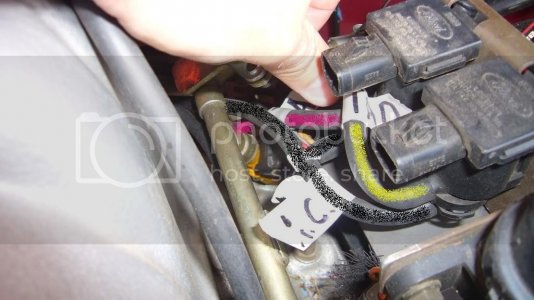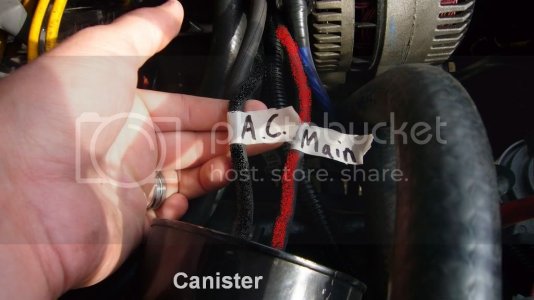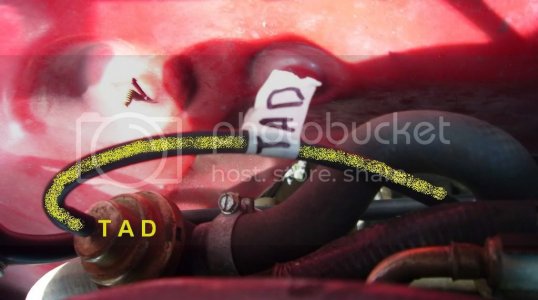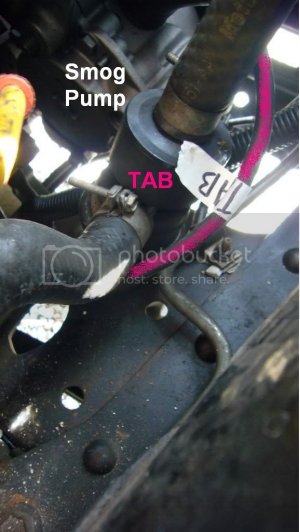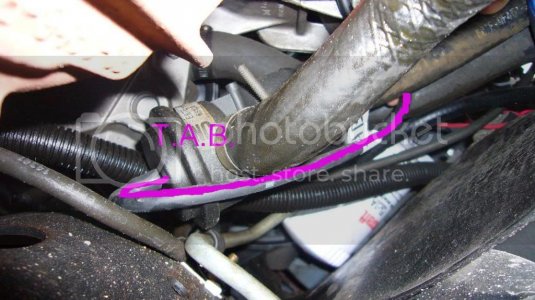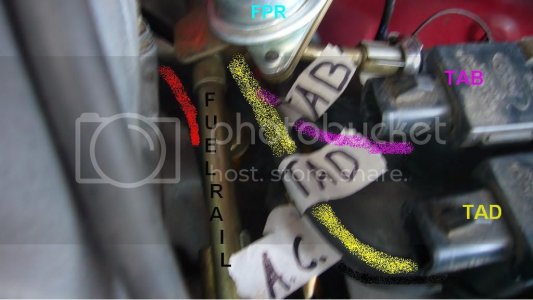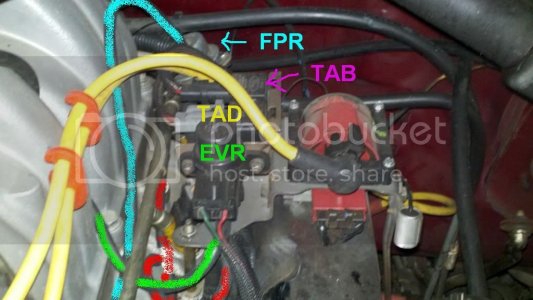I bought a 1989 FS Bronco 302, 5.0 Eddie Bauer with auto transmission. During the test drive, the owner said it had been setting up for a while and needed a fuel filter. The engine would idle at 1200 RPMs, go about 2 city blocks and die. CE light was not on because the bulb had been taken out. Replaced bulb and CE light comes on. I changed the fuel filter and discovered a rusty/stinky gasoline in the system. After siphoning out the nasy fuel, I placed a can of Seafoam in the tank and 8 fresh gallons of fuel.
After buying it, drove it home (2 miles away) , died a few times on the way, and never got above the speed limit of 35. After arriving home, inspected the engine again to discover a swap had been made from the original 1989 302 to another 302 with a slight difference in the intake. Who ever performed the swap left off vac hoses, emission hoses, have some vac lines mixed up and hooked up to places they probably shouldn’t be. A vac (?) line comes out of right front of intake (between air intake hoses and goes to an inoperative cruise control module. If this line has not been removed after engine warm-up, it will die. [And] then,once removed, engine will stay running but idles between 1200 to 1700 RPMs (See pics A, B) .
I also discovered that the “ACT” sensor, which should be installed in the lower intake near fuel rail, is installed in a coolant pipe on top front of engine (same pipe that coolant sensor comes out of – see pic “D”). No hole exists for the ACT, another reason to believe this intake is off a newer engine where the ACT (or now “MAF”) is located in the breather box. Lots of temp differences.
After throwing a lot of money at replacing, spark plugs/wire, rotor and cap, I found this site which has a vast amount of helpful information. I have used the search engine to pull up similar problems and compared them to mine (even learned how to pull codes). Showing KOEO 54, 28, 24
I am at an impasse with how/where to go from here. I do not know exactly which year model engine I have. Pulled the started and cleaned the block above starter but I do not find any alphanumeric info. Research shows I should have a 4 alphanumeric code, a dash, followed by another 4 alphanumeric code. All I have is a bunch of letters/numbers stamped straight/sideways and within a circle (does that make sense?) If one were to spread them out, it would be something like “33F1SBBS” (See pic “C). Some say off a 91 302 T-Bird, some say the “newer” engine after the 1989’s 302. It definitely has a different intake.
So, I have an engine that I have no idea to reference an exact “where to” on vac and emission system lines, an ACT sensor installed in the coolant system, a *** coming out of intake between air hoses, and now since I tried to adjust the idle with the idle ***** near throttle cable, the vehicle floods really easy and wont restart for 5 to 6 hours.
Looking for pictures please (not diagrams – since not a fully known year model specked out engine compartment) of “what goes where” considering everything under the hood (vac cans, emission cans, computer, etc), except engine, is set up for a 1989 302 5.0L with and engine/intake which looks like off a newer model. I figured that at this point if my vac and emission hoses were correct, then I can run tests on vac and sensors.
Any 89 FSB owners in the Sugar Land, TX area or any other ideas? Shops in the area not into experimenting with parts, but who are familiar with the FS Bronco's? Can't drive it (when running)- state inspection expired 2009 - won't pass smog tests with rats nest setup under hood.




Look below, identify and what should be correctly hooked up to this vac-like port? Maybe a Vapor Purge Valve? No wiring connector avalilable. 1989 302 didnt come with one, implant probably requires it?

After buying it, drove it home (2 miles away) , died a few times on the way, and never got above the speed limit of 35. After arriving home, inspected the engine again to discover a swap had been made from the original 1989 302 to another 302 with a slight difference in the intake. Who ever performed the swap left off vac hoses, emission hoses, have some vac lines mixed up and hooked up to places they probably shouldn’t be. A vac (?) line comes out of right front of intake (between air intake hoses and goes to an inoperative cruise control module. If this line has not been removed after engine warm-up, it will die. [And] then,once removed, engine will stay running but idles between 1200 to 1700 RPMs (See pics A, B) .
I also discovered that the “ACT” sensor, which should be installed in the lower intake near fuel rail, is installed in a coolant pipe on top front of engine (same pipe that coolant sensor comes out of – see pic “D”). No hole exists for the ACT, another reason to believe this intake is off a newer engine where the ACT (or now “MAF”) is located in the breather box. Lots of temp differences.
After throwing a lot of money at replacing, spark plugs/wire, rotor and cap, I found this site which has a vast amount of helpful information. I have used the search engine to pull up similar problems and compared them to mine (even learned how to pull codes). Showing KOEO 54, 28, 24
I am at an impasse with how/where to go from here. I do not know exactly which year model engine I have. Pulled the started and cleaned the block above starter but I do not find any alphanumeric info. Research shows I should have a 4 alphanumeric code, a dash, followed by another 4 alphanumeric code. All I have is a bunch of letters/numbers stamped straight/sideways and within a circle (does that make sense?) If one were to spread them out, it would be something like “33F1SBBS” (See pic “C). Some say off a 91 302 T-Bird, some say the “newer” engine after the 1989’s 302. It definitely has a different intake.
So, I have an engine that I have no idea to reference an exact “where to” on vac and emission system lines, an ACT sensor installed in the coolant system, a *** coming out of intake between air hoses, and now since I tried to adjust the idle with the idle ***** near throttle cable, the vehicle floods really easy and wont restart for 5 to 6 hours.
Looking for pictures please (not diagrams – since not a fully known year model specked out engine compartment) of “what goes where” considering everything under the hood (vac cans, emission cans, computer, etc), except engine, is set up for a 1989 302 5.0L with and engine/intake which looks like off a newer model. I figured that at this point if my vac and emission hoses were correct, then I can run tests on vac and sensors.
Any 89 FSB owners in the Sugar Land, TX area or any other ideas? Shops in the area not into experimenting with parts, but who are familiar with the FS Bronco's? Can't drive it (when running)- state inspection expired 2009 - won't pass smog tests with rats nest setup under hood.




Look below, identify and what should be correctly hooked up to this vac-like port? Maybe a Vapor Purge Valve? No wiring connector avalilable. 1989 302 didnt come with one, implant probably requires it?

Last edited by a moderator:


